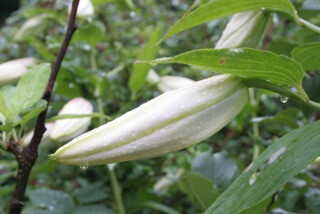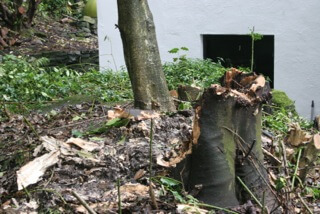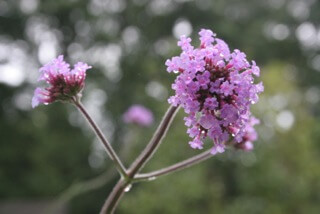Here’s hoping for a pavement-cracking Indian Summer, where the weather causes us to sleep in the garden around mountainous flowers of every colour and aroma. We need a good rest in the garden after that summer, and are we going to get one? Probably not! Besides, there is plenty to do in the garden in September, and plenty to admire too.
For a start, our lilies are finally going to explode into bloom. It seems they have held themselves back over the last few weeks, staying in bed I suppose, and who can blame them?

I always wait with bated breath for them to open, because they are so beautiful – even though I don’t like the smell. They are perfect in form, and I spend the whole summer protecting them from the rain and the lily beetle.
I find the best way to deal with the lily beetle, which nibbles its way through flowers and leaves and causes a mess, is by hand – looking out for them. But you have to be careful! One touch and the bright red beetles fall over on to their backs, leaving nothing but a jet black underside which is almost impossible to see.
When the flowers have finished it will be time to divide up the bulbs for next year. I grow my lilies in pots, and every third year I take them out and divide them up by simply pulling them apart. It’s an easy job – the new bulbs simply pull away from the old. You can either wrap them in newspaper and keep them in a frost-free place until spring, or pop them into new compost in new pots.
If you are growing them in pots, as with all plants really, you need to be sure they are not waterlogged in winter, and kept protected from frost. A pot is not so good an insulator as the rest of the garden, and a plant will not survive the same. I take mine into an unheated greenhouse, and maybe, if the temperature is minus 18 again as it was over the last two years, I might give them a little heat, just to keep the plants around 1 degree or so.
September is also a good time to attempt structural changes around the garden when the weather is still warm enough to get into the soil and there is not much chance of freezing to death out there. (That said, I bet we have snow! It was snowing on my birthday in 1957 at the end of September!)
I have finally sorted the huge holly bush that was taking away so much light, and threatening the roof of the house and the telephone line. If you are going to try to take large branches out of the garden, the thing to do is to tie them with stout rope to the next branch, or something sturdy. That way, when you have sawn through it, the branch will not fall onto something.

Never, ever saw at something whilst on a ladder, and if there is the tiniest amount of doubt you can do the job safely, get the professionals in to do it. The cost is well worth avoiding injury.
I now have a great space, vacated by the holly bush, in which I am going to plan an English cottage garden, but this takes time. So I will make up the beds – once I have cleared it of roots and stock it with winter bedding.
I am in a mind for delphiniums, agapanthus, flowering alliums and a few dahlias. Actually, it was a toss up between a cottage garden and an old fashioned dahlia garden, and I would love to hear from anyone who still grows dahlias in the traditional way.

September should be time for lawn maintenance, but this year, because of all the rain and therefore all the moss, I am hanging out a bit. If you scrape all the moss away in September, and this goes for this year only, you will only get more moss by the time spring comes along. So this year I am going to give the lawn a good cut (if it’s not too wet) and then a good spiking with a garden fork. Make holes half an inch in diameter and about six inches deep. This will improve air getting to choked up grass roots.
In the spring, give the lawn a good scrape with the grass rake, and over sow!

Paul Peacock studied botany at Leeds University, has been the editor of Home Farmer magazine, and now hosts the City Cottage online magazine. An experienced gardener himself, his expertise lies in the world of the edible garden. If it clucks, quacks or buzzes, Paul is keenly interested.
He is involved in an inner city program in Manchester which aims to encourage people to grow their own food whether they have a garden, an allotment, or even a balcony, as well as leading a co-operative initiative to train city dwellers to keep bees on allotments and gardens
He is perhaps best known as Mr Digwell, the cartoon gardener featured in The Daily Mirror since the 1950s. As Mr Digwell he has just published his book, A Year in The Garden.